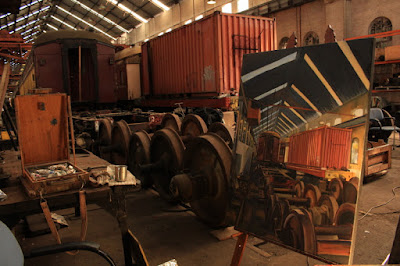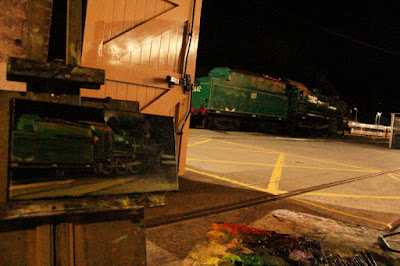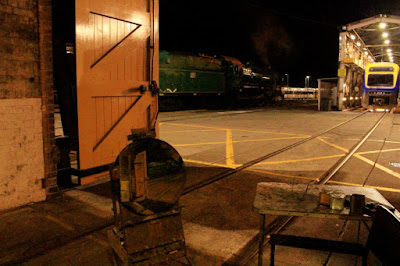There are faded sepia warning signs so old that they are handwritten.
Fire extinguishers have kept a quiet vigil, like forgotten sentries post battle.
Fire extinguishers have kept a quiet vigil, like forgotten sentries post battle.
 |
| E119 'Ghost sign in the Large' 2017 oil on canvas 31 x 15cm |
So, what is the 'Ghost in the machine' ?
This phrase, so often used, yet little understood, was coined by the Oxford philosopher Gilbert Ryle to describe the Cartesian dualist account of the mind–body relationship.
This phrase, so often used, yet little understood, was coined by the Oxford philosopher Gilbert Ryle to describe the Cartesian dualist account of the mind–body relationship.
One of the underlying assumptions within the famous maxim of the French 17th century philosopher René Descartes, 'Cogito ergo sum' ('I think, therefore I am') is that the mind is
not only distinct, but actually separable from the body.
 |
| E119A 'Ghost sign in the Large 2' 2017 oil on canvas 31 x 15cm |
According to the
philosopher John Locke (1632–1704), a person is defined as ‘an
intelligent being, having reason and reflection, which can consider
itself in different times and places.’ By this
definition, someone is defined as a person if they can think about
themselves in the
past, future, and conditional, and in a variety of different places.
If a person has this quality of self-conscious recognition, what is the cause? Does consciousness reside in their body, their brain, or their ‘soul’? If that person has had a serious accident rendering them unconscious and without brain function -so that the body is still alive but the mind is no longer self-conscious nor could ever be again-Is the body still to be regarded as a person? If not, then how can the physical body alone be that which makes them a person?
If the Eveleigh Railway Workshops are emptied of most of their machines and other heritage items, how can they still be considered to be the Eveleigh Railway Workshops?
If a person has this quality of self-conscious recognition, what is the cause? Does consciousness reside in their body, their brain, or their ‘soul’? If that person has had a serious accident rendering them unconscious and without brain function -so that the body is still alive but the mind is no longer self-conscious nor could ever be again-Is the body still to be regarded as a person? If not, then how can the physical body alone be that which makes them a person?
If the Eveleigh Railway Workshops are emptied of most of their machines and other heritage items, how can they still be considered to be the Eveleigh Railway Workshops?
How much can be removed, before it becomes an empty shell?
When the contents of a container are removed, is it still a container?
What is a body without a mind or a soul?
More paintings of the Eveleigh Railway Workshops
What is a body without a mind or a soul?
More paintings of the Eveleigh Railway Workshops




























